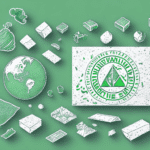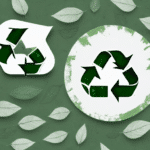Eco-Friendly Packaging Alternatives for Ecommerce Businesses
As ecommerce businesses continue to expand in the digital age, they face increasing scrutiny regarding their environmental impact. One of the most significant areas of concern is packaging. Traditional materials like plastic and Styrofoam not only harm the environment but also influence consumer perceptions. This article explores sustainable packaging alternatives that ecommerce businesses can adopt to minimize environmental impact while meeting customer demands.
Importance of Eco-Friendly Packaging in Ecommerce
Ecommerce operations generate substantial amounts of single-use plastics and packaging waste through their shipping and fulfillment processes. With growing environmental awareness, consumers are demanding sustainable packaging options. Adopting eco-friendly materials allows businesses to:
- Demonstrate Commitment to Sustainability: Show customers that your brand values the environment.
- Enhance Brand Reputation: Improve your company's image by aligning with sustainable practices.
- Fulfill Corporate Social Responsibility: Meet sustainability goals and regulatory requirements.
Moreover, eco-friendly packaging can lead to cost savings in the long run by reducing waste disposal costs and minimizing the risk of fines related to environmental regulations.
The Environmental Impact of Traditional Packaging
Traditional packaging materials like plastic and Styrofoam are notorious for their long decomposition periods, often taking hundreds of years to break down. This results in significant environmental pollution, particularly in landfills and oceans, where these materials degrade into harmful microplastics. Additionally, the production and transportation of these materials contribute to a larger carbon footprint due to high energy consumption and greenhouse gas emissions.
Alternatives to Traditional Packaging
- Biodegradable Packaging: Made from natural materials such as cornstarch, bamboo, or paper, these materials decompose quickly without leaving harmful residues.
- Reusable Packaging: Encourages customers to return packaging for cleaning and reuse, thereby reducing waste.
- Compostable Packaging: Designed to break down in composting environments, integrating seamlessly with organic waste management systems.
Types of Eco-Friendly Packaging Materials
Selecting the right packaging material requires evaluating various options based on sustainability, cost, and functionality. Common eco-friendly materials include:
Biodegradable Materials
These materials break down naturally over time, reducing long-term environmental impact. Examples include:
- Cornstarch-based packaging
- Bamboo fiber packaging
- Recycled paper products
Recyclable Materials
Recyclable packaging can be reprocessed into new products, minimizing waste. Popular options include:
- Recycled cardboard
- Aluminum packaging
- Glass containers
Compostable Materials
These materials can decompose in composting facilities, integrating with organic waste. Common compostable materials include:
- PLA (Polylactic Acid) bioplastics
- Plant-based foams
- Organic paper composites
Reusable Packaging
Reusable packaging reduces the need for single-use materials and fosters a circular economy. Examples include:
- Glass jars and bottles
- Metal tins
- Durable plastic containers
Evaluating Biodegradable Packaging
While biodegradable packaging is often seen as a sustainable alternative, it's essential to understand its limitations:
- Proper Decomposition Conditions: Biodegradable materials require specific conditions to break down effectively, which may not be present in all disposal environments.
- Chemical Additives: Some biodegradable packaging contains harmful chemicals that can negate environmental benefits.
- Greenhouse Gas Emissions: The decomposition process can release greenhouse gases, contributing to climate change if not managed correctly.
Businesses should assess the entire lifecycle of biodegradable packaging to ensure it aligns with their sustainability goals.
Pros and Cons of Recyclable Packaging
Recyclable packaging offers a balance between sustainability and practicality, but it comes with its own set of challenges:
Advantages
- Reduces Waste: Recyclable materials can be reprocessed, decreasing the total waste sent to landfills.
- Resource Efficiency: Utilizing recycled materials conserves natural resources and reduces the need for virgin materials.
- Consumer Appeal: Many consumers prefer brands that offer recyclable packaging options.
Disadvantages
- Energy-Intensive Recycling Processes: Some recyclable materials, like glass and aluminum, require significant energy to recycle, impacting their overall sustainability.
- Recycling Infrastructure: The effectiveness of recyclable packaging depends on the availability and efficiency of local recycling facilities.
- Contamination Risks: Improper disposal can hinder the recycling process, reducing the material's recyclability.
Adopting Compostable Packaging Solutions
Compostable packaging is gaining traction as a sustainable alternative, particularly for businesses aiming to reduce their environmental footprint. Key considerations include:
- Composting Accessibility: Ensure that customers have access to composting facilities or provide guidelines for proper disposal.
- Material Selection: Choose materials that decompose efficiently in home or industrial composting systems.
- Consumer Education: Educate customers on how to dispose of compostable packaging correctly to maximize environmental benefits.
Selecting the Right Eco-Friendly Packaging for Your Business
Choosing the appropriate eco-friendly packaging involves evaluating multiple factors to balance sustainability and business needs:
Product Type
The nature of your product—its size, fragility, and perishability—dictates the type of packaging required. Ensure that the chosen material provides adequate protection while being sustainable.
Customer Preferences
Understanding your target audience's values and preferences can guide the selection of packaging materials that resonate with your customers.
Sustainability Goals
Align packaging choices with your company's broader sustainability objectives, such as reducing carbon footprint or minimizing waste.
Cost Considerations
While eco-friendly packaging may have higher initial costs, consider long-term savings through waste reduction and enhanced brand loyalty.
Cost Implications of Eco-Friendly Packaging
Transitioning to sustainable packaging often involves higher upfront costs. However, businesses can mitigate these expenses by:
- Optimizing Packaging Sizes: Reducing excess packaging can lower material costs and shipping expenses.
- Streamlining Fulfillment Processes: Efficient order fulfillment can decrease the overall number of packages needed.
- Leveraging Bulk Purchases: Buying eco-friendly materials in bulk can reduce per-unit costs.
- Enhancing Brand Value: Investing in sustainable packaging can boost brand reputation, leading to increased customer loyalty and sales.
Implementing an Eco-Friendly Packaging Strategy
Successfully adopting sustainable packaging requires a comprehensive strategy that encompasses the following best practices:
- Set Clear Sustainability Goals: Define specific, measurable objectives related to packaging sustainability.
- Assess Current Practices: Evaluate existing packaging materials and processes to identify areas for improvement.
- Choose Appropriate Materials: Select eco-friendly packaging that aligns with your business needs and sustainability goals.
- Optimize Packaging Design: Design packaging that minimizes material use while ensuring product safety.
- Educate Stakeholders: Train employees and inform customers about the benefits and proper disposal of sustainable packaging.
Success Stories in Sustainable Packaging
Several ecommerce businesses have successfully transitioned to eco-friendly packaging, reaping both environmental and commercial benefits:
- Patagonia: Their Footprint Chronicles program has significantly reduced packaging waste by implementing reusable and recyclable materials.
- Loop: This startup delivers products in reusable packaging, fostering a loyal customer base focused on sustainability.
- Amazon: Through initiatives like the Frustration-Free Packaging program, Amazon has encouraged the use of recyclable and minimalistic packaging across its platform.
The Future of Sustainable Packaging in Ecommerce
The ecommerce industry is evolving rapidly, with sustainability becoming a critical factor for success. Future trends in eco-friendly packaging include:
- Innovative Materials: Development of new biodegradable and recyclable materials that offer better protection and sustainability.
- Smart Packaging: Integration of technology to enhance packaging functionality while maintaining eco-friendly standards.
- Circular Economy Models: Emphasis on reusable and returnable packaging systems to minimize waste.
- Personalization: Tailored packaging solutions that reduce material usage and enhance the unboxing experience.
Embracing these innovations will be essential for ecommerce businesses aiming to remain competitive and environmentally responsible.
Addressing Common Misconceptions About Eco-Friendly Packaging
Despite its benefits, eco-friendly packaging is often surrounded by misconceptions that can hinder its adoption:
Myth: Eco-Friendly Packaging is Always More Expensive
While some sustainable materials may have higher initial costs, the long-term benefits—such as reduced waste disposal fees and enhanced brand loyalty—can offset these expenses.
Myth: All Eco-Friendly Packaging is Equally Sustainable
The sustainability of packaging materials varies. It's crucial to assess the entire lifecycle of the material, including production, use, and disposal, to determine its true environmental impact.
Myth: Eco-Friendly Packaging Compromises Product Protection
Advancements in sustainable materials have led to packaging solutions that offer the same level of protection as traditional options, ensuring product safety without environmental trade-offs.
Key Considerations for Switching to Sustainable Packaging
When transitioning to sustainable packaging, ecommerce businesses should focus on the following factors:
- Material Availability: Ensure a reliable supply of chosen eco-friendly materials to avoid disruptions.
- Cost Management: Balance sustainability with budget constraints by exploring cost-effective options and bulk purchasing.
- Customer Preferences: Align packaging choices with what resonates with your target audience to enhance customer satisfaction.
- Operational Efficiency: Streamline shipping and fulfillment processes to complement sustainable packaging efforts.
- Environmental Impact: Continuously assess the ecological footprint of your packaging choices to ensure ongoing sustainability.
Measuring the Environmental Impact of Shipping and Fulfillment
Understanding the environmental footprint of your ecommerce operations is essential for effective sustainability strategies. Key methods include:
- Carbon Footprint Calculation: Use carbon calculators to quantify greenhouse gas emissions from packaging and shipping processes.
- Waste Audits: Conduct regular assessments to identify and reduce sources of packaging waste.
- Lifecycle Analysis: Evaluate the environmental impact of packaging materials from production to disposal.
- Performance Metrics: Track key indicators such as recycling rates, material usage, and waste reduction to gauge progress.
Implementing these measurement techniques allows businesses to make informed decisions and continuously improve their sustainability practices.
Conclusion
Adopting eco-friendly packaging is not only a responsible choice for the environment but also a strategic advantage for ecommerce businesses. By selecting sustainable materials, optimizing packaging designs, and implementing effective waste reduction strategies, businesses can significantly reduce their environmental impact. Furthermore, these efforts enhance brand reputation and resonate with increasingly environmentally conscious consumers. As the industry evolves, staying committed to sustainability will be crucial for long-term success and positive environmental stewardship.




















